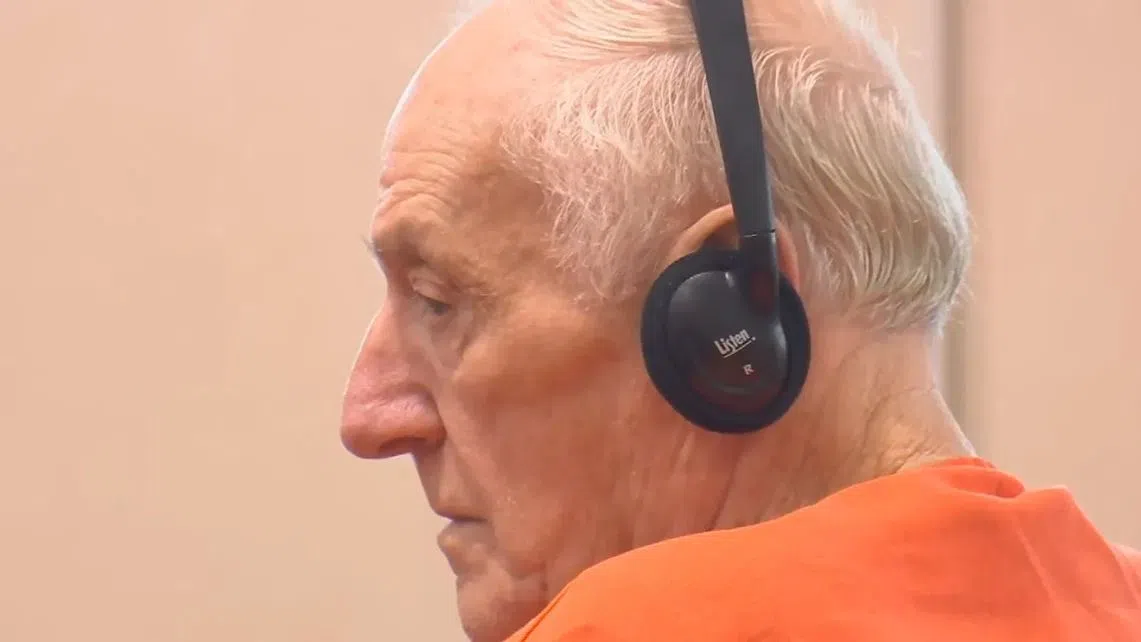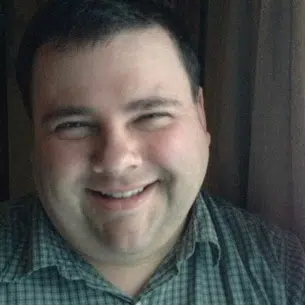
Raymand Vannieuwenhoven appears in Marinette County court Aug. 26, 2021, to be sentenced for the 1976 murders of David Schuldes and Ellen Matheys at McClintock Park. PC: Fox 11 Online
MARINETTE, WI (WTAQ-WLUK) – The attorney for a dead man asked the Wisconsin Supreme Court to review a ruling saying Raymand Vannieuwenhoven’s conviction for a 1976 double murder stands, despite the deceptive tactics used by police, arguing the case presents “novel constitutional issues presented by constantly evolving technology.”
Ellen Mathys and David Schuldes were murdered at McClintock County Park in Marinette County in 1976. The case remained unsolved for more than four decades. In 2019, a DNA sample from evidence at the crime scene was determined to be from a particular family. After samples tested from Vannieuwenhoven’s brothers weren’t a match, a sample from him — obtained from a licked envelope for a phony survey on a police performance filled out by Raymand — was a match, according to the complaint.
Vannieuwenhoven went to trial, was convicted, was sentenced to consecutive life prison terms in the case. He died in June 2022, while a resident at the long-term care unit at Oshkosh Correctional Institution — but the appeal continued as the defense sought a ruling to prevent similar police tactics in the future.
Vannieuwenhoven’s attorneys argued the “trickery” used couldn’t be reasonably construed as permission to generate a DNA profile in a murder case. Prosecutors argued Vannieuwenhoven voluntarily ‘abandoned’ his saliva to someone he knew was law enforcement – and had no expectation of privacy at that point.
Last month, the state appeals court upheld Vannieuwenhoven’s conviction, saying “law enforcement lawfully seized both the envelope and its contents because Raymand voluntarily consented to giving both of them, which included the DNA sample contained therein, to law enforcement.”
In a new brief, attorney Ana Babcock asked the Wisconsin Supreme Court to review the case. The high court has the option if it wants to decide the case or not. There is no set timetable for when that decision is made. If it accepts the case, oral arguments would be scheduled. If it does not take the case, the appeals court ruling stands.
In her 15-page brief, Babcock argues the court needs to address Fourth Amendment search and seizure rights in light of changing technology.
First, this case presents the opportunity to clarify if and how traditional Fourth Amendment principles–applicable to things whose evidentiary value is apparent on its face–apply to things that “contain–and conceal–the privacies of life.” Second, this case is a vehicle to resolve if and to what extent the government can warrantlessly extract, analyze, and search evidence–only accessible through technological advancements–so long as it lawfully obtained the evidence. Along these lines, this case can clarify whether the analysis of biological material is a separate search for Fourth Amendment purposes. Third, this Court can use this case to declare whether one forever loses one’s expectation of privacy in one’s entire genetic blueprint by the unintentional and unavoidable shedding of one’s DNA. In Maryland v. King, 569 U.S. 435 (2013), the Supreme Court foreshadowed the day that science progressed to the point where warrantless DNA searches cross the constitutional line. That day is here,” Babcock wrote.
The state Attorney General’s office has not replied to Babcock’s petition.





Comments